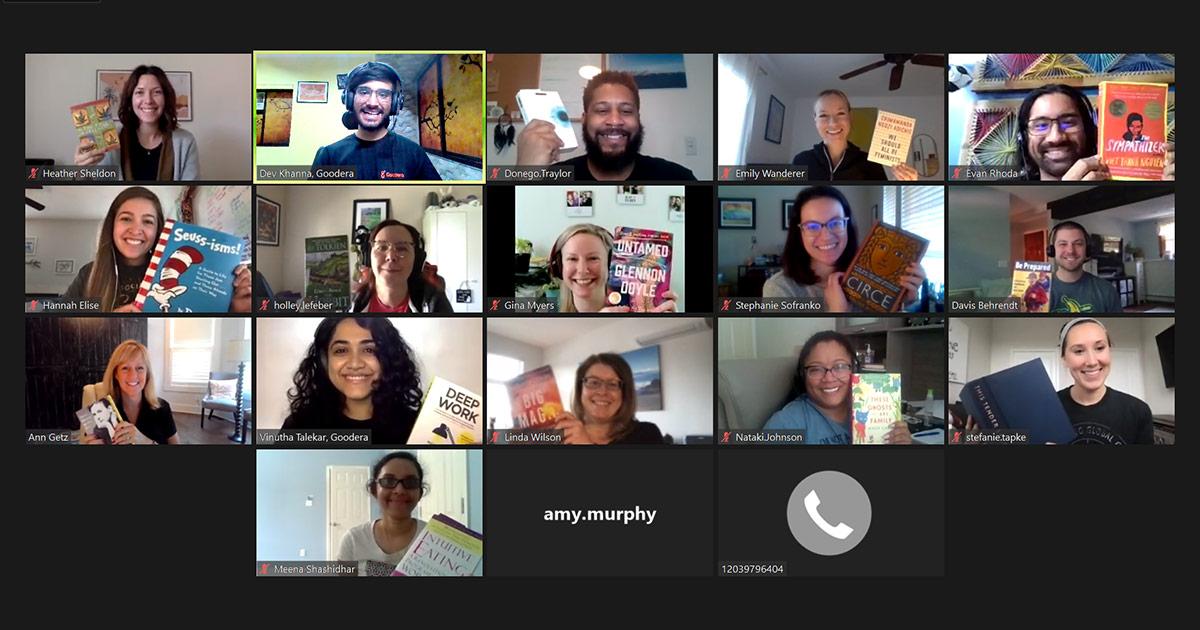Promoting Mental Health, Wellness and Stress Reduction in the Workplace
The pandemic created physical separations between us and our families, coworkers, and friends, but in some ways the event unified us. Everyone around the world experienced the same event at the same time. Everyone on some level has been sorting through pain, trauma, loss, anger, grief, anxiety, depression, and other emotions. Many of us may have never experienced the depth or breadth of those emotions before. We can acknowledge that this event was devastating and has impacted us all in different ways and start to look for ways to support each other. I believe we can draw from this shared experience and create opportunities to connect with each other.
The average person spends 1/3 or 90,000 hours of their life at work. I think it’s safe to say that our jobs have a huge impact on our quality of life. I have the pleasure of speaking at an upcoming virtual conference hosted by From Day One that is focused on promoting mental health, wellness and stress reduction in the workplace. In my work, I advise and consult companies on strategies to use employee engagement software to support cultures of fulfillment and belonging. How can companies cultivate these spaces? I’ll share a few thoughts for us all to come together (please hear the Beatles song as you say that last line) and find opportunities to connect.
3 Opportunities to Connect with Employees
1. Technology is Key
2020 created workforce trends that are here to stay, including the option or necessity for remote-work. Industries that don’t have a fully remote workforce, usually have some employees that could do their job virtually. Software and technology infrastructure is an integral part of creating a functional remote workforce. This technology infrastructure should go beyond email and video conference calling.
Employee Engagement software, like CSRconnect, can offer a place to host virtual groups and virtual volunteer events. This gives employees the opportunity and a place to connect with each other to support nonprofits around the world and in their local community. The beauty in virtual volunteer events is that you can source opportunities from anywhere in the world, while bringing employees together to support a cause they are passionate about. For example, Blackbaud employees participated in a virtual volunteer event curated by Goodera to record audio-books for children with special needs. These employees do not work in the same department or live in the same place, but technology removed that barrier and allowed them to come together.

2. Collaborative Leadership, Training and Development
It’s not up to the HR department alone to drive the strategy behind creating an environment where employees feel safe and supported. I’ve had the opportunity to see some of the strategies behind employee wellbeing at Blackbaud. Leadership from HR, CSR and training and development collaborate on a cross functional team to plan and execute employee wellbeing initiatives. One example of an initiative at Blackbaud is Engagement Labs. All managers attend Engagement Labs which are designed to make sure they know how to connect with their employees and what resources are available to support employee wellbeing. I spoke with Makeva Daniels, the Senior Manager of Benefits at Blackbaud, about the goal behind engagement labs and she said,
“We want managers to be able to respond to an employee having a health crisis and we want employees to feel like they have someone to support them.”
3. Finding Connect-“in” (connection + check-in)
I had a recent experience where I felt safe sharing my mental health with a manager and asked for help. On my bad mental health day, I could not focus. I was stressed, anxious and felt a panic attack coming on. I also had a presentation to deliver, so I knew I needed help. I asked a manager to take the lead and shared my true state of mind. Even though I knew the manager would support me I was a little embarrassed and scared to ask for help. I am lucky to have this dynamic, where I could be honest and feel safe in sharing that piece of myself. Not everyone has that. I’ve experienced first-hand how spending real time and effort in finding those moments to connect and check in, can cultivate this feeling of safety between a manager and their employees. We all deserve to work in a space where asking for help is more than just acceptable but also encouraged.
Another example of an initiative at Blackbaud that aims to create this type of culture is “Wellbeing Wednesdays”. On Wednesdays, Blackbaud employees receive communication that highlights various mental health resources, wellbeing tools, stories and connection points. Although all of this information is available to employees on the company intranet, this extra communication serves as a reminder that leadership cares about mental health and employee wellbeing. This communication also provides another point of reference for employees to find available resources.
I hope you’ll checkout the panel discussion “Deploying Technology to Promote Health and Wellness” at the From Day One conference to learn from HR, Benefits, Communication leaders and others on the journey in their companies towards supporting mental health and wellbeing for all employees.
About the Speaker
Heather Sheldon is a Sales Executive who advises and consults companies on using the Blackbaud YourCause Employee Engagement solutions.
Heather’s unique background spans traditional and non-traditional. From empowering people through transformative life coaching, supporting mental and physical wellbeing as a reiki practitioner, to inspirational speaking and more traditionally nonprofit management and leading global Diversity & Inclusion, ERG and Corporate Social Responsibility programs at a Fortune 500 company. Her career has been fueled by a passion for serving others and a belief that businesses hold a unique position to influence social impact. In her current role at Blackbaud, she consults with organizations on how to take a holistic approach to corporate social responsibility strategies in creating cultures of fulfillment and belonging.